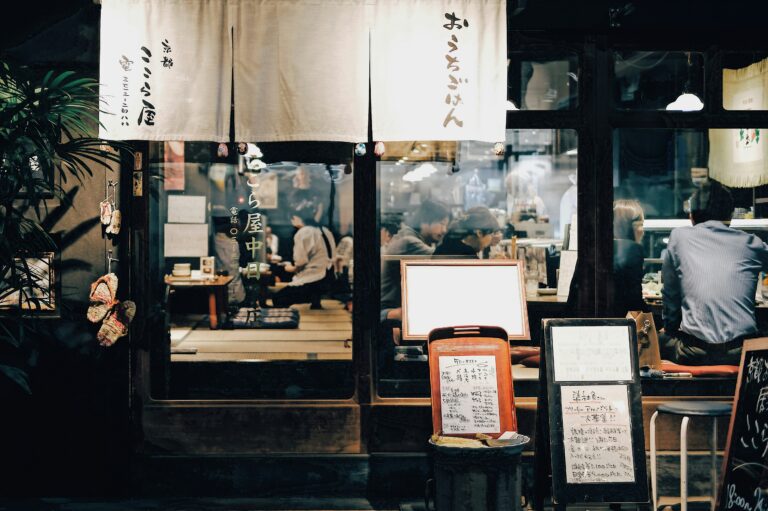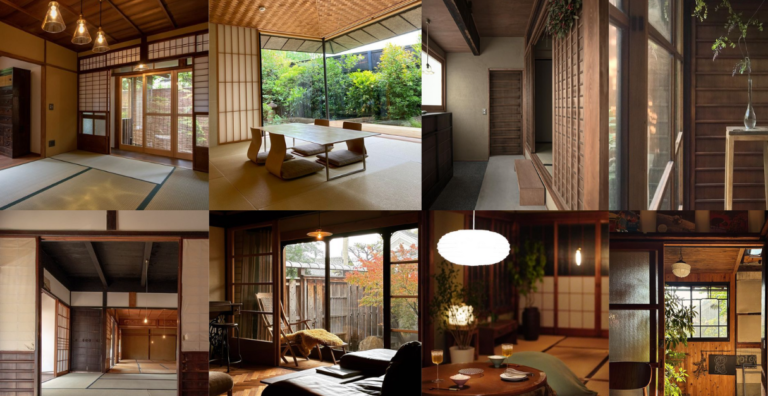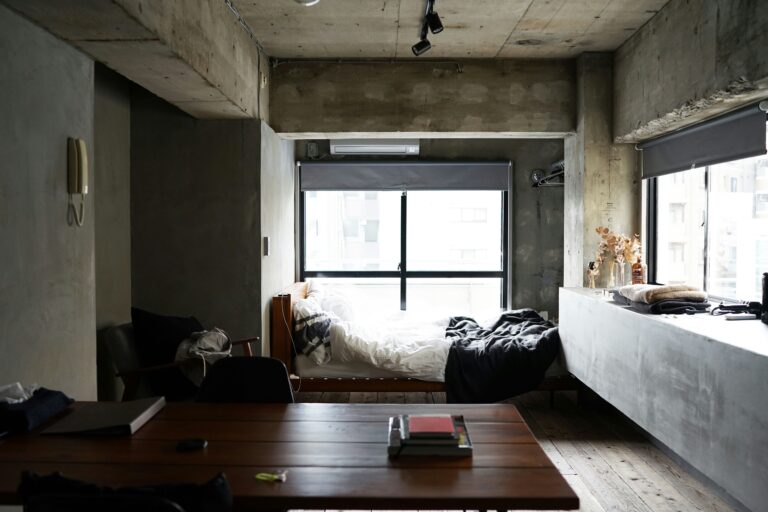Winter in Japan Can Be Miserable. How to Stay Warm in Winter in Japan.
This comes from a Canadian who also lived in snowy Minnesota for seventeen years. I know winter. I hate winter. I don’t like snow. I don’t like ice. And worst of all, I don’t like being cold. So when I was assigned a job placement in a part of Japan whose climate is described as Mediterranean, I breathed a huge sigh of relief that it wasn’t Hokkaido.
But naive me didn’t realize what I was getting into. Yep. Drafty old Japanese houses with no heat and NO INSULATION. Schools with the windows cracked open all winter long. No plows. No fireplaces. No central heating. It’s rough. It might as well be Hokkaido.
Being cold isn’t worth it, even if you are only staying in Japan for travel or a short-term contract. So I’m sharing what I hope will be the grand-daddy of reference lists on how to stay warm during winter in Japan.
Not all of these options will be right for you depending on your preferences and life situation, but by all means, read them all and assemble your personalized winter warfare strategy. It is essential to prepare and use multiple approaches especially in these old inaka houses.
Clothing
1. Choose the Right Base Layer
Yes, Uniqlo HEATTECH has a cult-like following. Why? It’s not bulky, it doesn’t look like long underwear, and the products tend to be of consistently reliable quality. HEATTECH comes in three warmth ratings, standard, “Extra Warm” and “Ultra Warm.” As the rating increases, the knit thickness also increases. If you are freezing at your desk, go ahead and pay a little extra for an Ultra Warm turtleneck with long sleeves and a pair of leggings or long-johns to wear under your pants or skirt.
Don’t want to go for Uniqlo? The best base layer will be moisture-wicking polyester or nylon. Contrary to what you might assume, the fabric closest to your skin shouldn’t aim to insulate. It should primarily keep your skin dry (preventing the cooling action that comes along with perspiration and the loss of skin moisture).
2. Stay Warm with Wool Layers
The next insulating layer is intended to hold onto heat. Think wool sweaters, sweatshirts, fleece pull-overs or a slim quilted puffer. Still cold? Double up.
Why choose wool? Wool is a highly sophisticated fiber, worth being picky about. Each fiber has many tiny air pockets inside (air pockets insulate and keep you warmer). And the fiber can both absorb water towards the hollow interior and repel water on the surface, creating a comfortable feeling. Just don’t forget the base layer, which will also serve as a barrier from wool’s scratchy feel.
*Pro-tip: You will find a lot of acrylic or acrylic-blend sweaters, which look similar to wool. AVOID THEM. I have found that acrylic doesn’t breathe well, which can be uncomfortable and counterproductive, collecting sweat and making you frigid.
3. Add a Shell Layer
Your outer layer is the shell that prevents your cozy insulating layer from losing heat. This can be when you go outside or even when exposed to indoor drafts… and you can expect indoor drafts.
But when indoors, this might be as simple as defending from drafts with a simple windbreaker.
Layering for warmth is a three-tier approach:
1. wick moisture
2. hold warmth
3. prevent loss of heat
By the way, holding onto heat and preventing the loss of heat are not the same action. You can tell the difference between saving money and preventing theft of your assets, right? Yeah, it’s like that.
4. Go All-Out With Wool on Your Feet
Cold feet are a symptom of an overall cold body. But if you are like me, my hands and feet always feel cold.
When headed out, be prepared with wool socks. Smartwool are a reliable choice, but I also like to go with any good thick wool sock. I will often wear a thin cotton sock under my wool socks so I can wear the same wool socks at least a few times between washings.
Indoors, always have slippers. You can find all sorts of materials including fleece, wool, corduroy, and more. Since you already prepared with good socks, the most important factor with slippers besides the warmth will be comfort. Choose something comfortable for standing, that doesn’t squish your toes. Cheap slippers are available everywhere in Japan including hyaku-en stores and sometimes grocery stores. I’ve tried a few but found the most comfortable pairs are from Muji.
Room socks are another common wardrobe staple for Japanese home life. They don’t work well in shoes, but are fuzzy and feel great around the house. This is one occasion where I’d advise paying a few extra hyaku-en. Daiso offers room socks, but mine got bunchy and fit poorly. Opt for Muji, and they even have Muji room socks at Lawson convenience stores these days.
If you work at a school or office where indoor shoes are the norm, plan accordingly. While sneakers might have the support you desire, they can often be designed to allow for high ventilation, resulting in chilly tootsies for you. When I worked at a school, I swapped out my breathable summer shoes for Wool Allbirds. When paired with thick socks, wool shoes can make a real difference.
Review → Best Shoes for Living in Japan
Heating Your Space
5. Kerosene Stove
Korosene stoves are a commitment, but they do an amazing job of sending out heat to warm up a room quickly. They will require filling up a plastic can with kerosene (灯油 / Tōyu) at a local gas station, then using a pump (go ahead and buy a cheaper one at Daiso) to fill up the stove. This takes some practice and can be a bit messy for beginners.
As an added benefit, most of these stoves have a burner. You can heat a kettle, pan or nabe pot on top. So you can slow-cook stew or keep a kettle boiling while you cozy up. Maybe I’m crazy, but hot water warmed over a kerosene stove tastes the best.
If you will be staying in Japan for long-term, it’s a great idea to have one of these kerosene stoves on hand with a back-up supply of kerosene. If the power goes out, you can stay warm and cook without electricity.
Be sure to follow the manufacturer’s safety instructions and allow for some fresh air exchange time every few hours.
See also → Aladdin BF3911 Blue Flame Kerosene Heater Review
6. Space Heaters
There are a variety of kinds of space heaters available. There are oil heaters (the kind that look like radiators), halogen heaters, fan heaters, faux fireplaces and more.
Space heaters are mobile and effective, but can be an energy suck if not managed appropriately. Also a fire risk, space heaters should be used sparingly and only with supervision.
*Pro-tip: I use a slim space heater in my bathroom (not near water). I turn on the heat a few minutes before shower time. I hop in the shower, then towel-dry well and stand in front of the heater while doing the rest of my routine. It helps.
7. Wood-Burning Stove
If you live on a property with trees, having a wood-burning stove provides the advantage of utilizing a free fuel source (however you pay in labor of wood chopping).
Wood stoves heat up a room well and provide cozy ambiance. They often have a burner for cooking or a kettle. They require a commitment for installation, but are often more attractive than kerosene stoves or space heaters. There are some new models that can efficiently burn bamboo, however the price and installation commitment of any stove is much higher than the other options.
Gadgets
8. Electric Blanket
I’m not a big fan of the blanket materials I’ve tried so far – they have been cheap-feeling and easy to pill. The material needs to be thin enough for the heat to pass through the blanket to your body, but that means you can feel the stiff wires. The feel of wires doesn’t exactly inspire the spirit of “coziness.”
But there is no denying that an electric blanket can really take the edge off of household coldness. Even though I don’t love the product, I still use my electric blanket daily as a lap blanket while working at my desk, and sometimes between my blanket and mattress.
The advantage of an electric blanket is that it quickly provides warmth to a large surface area.
9. Warmlet Toilet Seat Warmer
A chilly seat on your buns during the cold of winter is not pleasant. Avoid it with a warmlet. ‘Nuff said.
10. Yutanpo
You know how awful it is to be cold and then get in a bed that feels somehow even colder?
A yutanpo (湯たんぽ) is placed between the futon and covers before bed so when you get it, the foot of the bed is a manageable temperature. A durable yutanpo comes in hard ceramic, metal or plastic. It is essentially a hard-shelled hot water bottle which is filled with hot water, then slid into a fabric pouch.
11. Hot Water Bottle
A yutanpo will last a long time, but a western-style hot water bottle is easier to snuggle up to. We have hot water bottles with fuzzy covers.
12. Futon Warmer
A futon warmer is a multi-function hot-air machine where a tube is placed between the futon and duvet, then the machine blows hot air for a preset amount of time (20, 60 minutes, etc.) The machine can warm a futon and duvet to make it comfortable before sleeping. Some also have sleep settings to maintain nighttime warmth, or extra hot settings used to exterminate mites.
13. Kairo Warmers
Kairo warmers are disposable packs that create heat when the packaging is removed and the packet is exposed to air. Sticky kairo warmers allow a large packet to stick to the back of an undershirt, while the loose kairo packets fit in your pockets.
They are great for the outdoors (think winter festivals). Chilly fingies? Stick ‘em in your pockets.
14. Keep Your Beverage Warm with a Thermos or Mug Warmer
I am often guilty of making tea or coffee, then sitting down to a session of focused work only to discover that my hot beverage has become cold. But then I changed my game.
Japan has a prolific offering of water bottles and thermoses available, but they are often small and might not hold a drink temperature for very long. I invested in a Stanley Thermos a few years back and recently brought it back to Japan. I am so glad to be able to use it every day here.
It has become part of our daily routine to refill the Stanley thermos three times a day. The great thing is that it holds heat so well, that we can always drink all the hot water before it can cool at all.
The classic large vacuum thermos design holds a temperature of 74°C (154°F) Celsius for 24 hours. Desk work, field work, kitchen work… are all made better with constant sips of hot water or tea. I’ve also started bringing a full thermos to my bedside so I can charge up on warmth as soon as I wake up, before venturing outside from my blanket haven to the cold outside world.
***Pro-tip: Use a separate thermos for coffee. Thermoses will hold a coffee smell and give an annoying flavor to other drinks. But if you mess up and end up with coffee smells, fill it up with hot water, two spoons full of baking powder and some peppermint Dr. Bronners. Let it sit for two days, then dump it out and rinse with vinegar and hot water. I’ve been able to save my thermos this way.
Not a thermos person? You might be interested in a mug warmer that lives at your desk. This mug warmer has an auto-off function, but you can also find a cheaper version from Daiso.
15. Heated Vests
You can get vests and jackets that are fitted with their own heat source. They come with what is essentially a rechargeable USB power bank. If you’ve seen the Japanese air conditioning jackets, here is your winter version. Stay warm while doing house chores, studying, yard work… you name it. I have a harder time keeping my extremities warm than I do my core and torso, but I know that there will be someone out there who is going to get this heated vest and fall in love with it.
Home
16. Floor Insulation
Now this might not be an option for everyone, but if you are in the position to do some renovation, it involves adding a layer of insulation either between or on top of the floor joists. Between the floor joists will maintain the existing level of the floor, however requires a bit of extra effort to install the proper clips, cut insulation to size, and seal with tape. You can see the general process in this DIY video.
17. Close the Doors
Maybe this is a no-brainer, but it should be mentioned. The smaller of a space you have to warm, the easier it will be to keep it warm and the less energy you will spend. So close interior doors, shoji screen doors and thick drapes.
18. Cover Your Windows With Thick Curtains
Drapery is available in energy-saving thicknesses. This typically means a dense lining that shields from both hot summer sun and drafts in winter. Check out:
- Nitori’s Heat Shield Curtains
- Thermal Curtains on Amazon.jp
- Insulating Sheers on Rakuten ← allows daylight in
There are also vinyl curtain liners available that reduce drafts and add an additional barrier of insulation. I would not necessarily recommend these, as vinyl in sunlight has a tendency to off-gas (smell bad) which contributes to poor indoor air quality. And they look like shower curtains. 🤨
19. Kotatsu
The kotatsu (炬燵) is the holy-grail of Japanese winter defense tools. It a low table similar to a coffee table where the top can be lifted off. A heater is installed to the table frame, a special quilt is used as a skirt to keep the heat in a small area, and the loose table top completes the table sandwich.
But be warned. My husband refers to the kotatsu as the “Devil’s tool” because it encourages laziness. One can get pretty attached to the warmth, resulting in lack of physical activity and avoidance of normal daily tasks, errands, etc.
Set up the kotatsu on a padded rug. If you love the kotatsu but the floor is still too cold, there are insulating sheets available to lay between the rug and the floor, and consider pairing it with a floor chair.
See also → Best Kotatsus You Can Buy Online in Japan [2024]
***Pro-tip: Try your best to not fall asleep under the kotatsu. Not only is it a safety hazard, but people tend to say that it increases the chance of catching cold, which may be related to the dehydrating action of a space heater.
20. Desk Kotatsu
Love the kotatsu feel but need to get some work done? Kotatsu desk. ‘Nuff said.
This version from Nitori has a convenient plug-in at the back of the desk. You will want to either get a specialized chair with a skirt to prevent heat from escaping at the chair base, or place another blanket between you and the chair.
Nitori
LOWYA
Amazon.jp
21. Desktop Gas Burner + Cartridges
When you are all cozied up at the kotatsu and can’t be bothered to leave it to eat, stay warm and cook at the table! It’s very common for families to cook nabe on a cassette stove. Don’t forget the gas cartridges.
22. Winter Bedding
Nitori has a series of products called “N Warm” that are both warm and fuzzy. Don’t underestimate the power of fuzzy. Aesthetically, my first reaction is hesitant. But sensory comfort is very valuable in winter.
23. Foot Warmer
A compact pocket-like version of an electric blanket, the foot warmer is perfectly designed for when you are sitting. If you are someone who regularly gets extremely cold feet, this could turn into a beloved tool. With 12,000+ reviews (93% of which were four or more stars), this foot warmer seems like a pretty safe choice.
Food & Beverages
24. Hot Vending Machine Cans
For less than a buck, you can get a little can of hot coffee or soup on the go. Good to warm both your cold winter hands and from the inside out.
25. Hot Soups & Curries
Every meal is a chance to get a little boost of warmth. No wonder there are so many kinds of delicious soups to choose from in Japan. Food is an essential component for how to stay warm in winter in Japan. During the cold seasons, you can even build-your-own oden cup at konbinis. If you haven’t tried making them all at home yet, be sure to try these out:
- Oden: A one-pot meal usually with boiled egg, tofu, konyakku, daikon, fish cakes, fish broth, and mustard topping. You can buy affordable pre-assembled packets to keep on hand for a quick heat-and-serve meal.
- Nabe: A one-pot meal with a variety of meat and vegetable ingredients and a variety of broth flavors. Broth packets are available in creamy pork, soy sauce, kimchi, dashi flavors and more).
- Miso Soup: I’m guessing you already know what this is, but have you gotten in the habit of having it with your breakfast? The probiotics in miso are a great way to prime an empty stomach for the day.
- Japanese Curry and Rice: Not only is this a hot dish, but the spices are also warming.
26. Coffee, Tea, Non-stop Herb Tea, Hot Water
I love coffee and sometimes over-do-it on caffeine. Herb tea is great, but I also discovered recently that I enjoy drinking plain hot water. Keep a thermos of hot water at your desk, kotatsu, and bedside. It will make a huge difference!
27. Amazake
Amazake (甘酒) is a traditional fermented rice drink that is made to varying degrees of sweetness. Some varieties are alcoholic. Grated ginger and ginger juice are added to rice koji or sake lees (a rice by-product when producing sake). The viscosity holds onto heat well and feels comforting in the body. The ginger helps, too. Amazake also boasts some impressive vitamin and nutritional benefits, however is high in sugar and should be enjoyed in moderation, especially for diabetics.
While alcohol can provide some relief to dull cold-feeling sensations, remember that your body is still cold and should be cared for accordingly.
Lifestyle
28. Bath Culture
You can super-charge your body warmth or recover from a chilling day by taking a bath. There is a reason why the bath has become such a staple in Japanese culture. A bath at home will help you relax and get your body ready for sleep mode.
And don’t forget to enjoy onsens, sentos and the public super-bath on your down time, where you can often enjoy special experiences such as therapeutic alkaline water, mineral baths, electric baths, outdoor baths and more.
29. Exercise
Don’t get stuck under the kotatsu – staying active will keep your blood flowing and keep your body warm. Not only is it good to keep warm, but exercise is important to ward off winter blues.
***Pro-tip: Too cold to go outside just yet? We just discovered the ultimate lazy-person hack for getting in some movement without getting out of the covers. We bought an old Nintento Wii from the second-hand store. Paired with Wii Sports or Just Dance, you can effectively combine physical activity with distraction enough to escape the invisible chains of frigidity. 😉
30. Strawberry Tunnels
I’ve gotta tell you. Strawberry tunnels are pretty dang joyful. The polytunnels hold heat from the sun, they shield from the wind, and walking around popping perfectly sweet and ripe strawberries into your mouth is pure delight. It’s usually an affordable experience, well worth it at least once a winter.
I hope this article gave you some valuable ideas. Stay warm out there!






